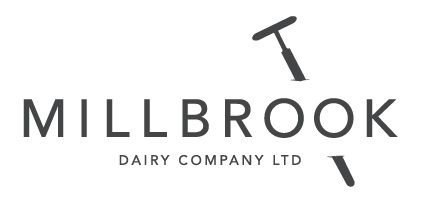Between a rock or a hard place... Does the dairy sector need a reset?
Right now, farming – and the dairy sector - is in one of the most difficult positions it has ever been in... And there seems to be very little light at the end of a very long tunnel.
Starting at the beginning - the cost of production and producing livestock has been hit hard from the very base level of farming. The increases seen in the last year have been massive.
Everyone cannot fail to be caught up in the current cost-of-living squeeze. And the dairy industry is no different. In times gone by, the normal ‘supply and demand’ influences would prevail. Farmers would lobby hard and be paid more for their milk and this would push and motivate higher production levels. But then, higher production would lead to excess supply which in turn, would push the price back down again.
Not this time! Yes, farmers are getting a higher milk price – around 48p – 50p a litre (12 months’ ago it was 30p a litre), but now the actual cost to produce milk has escalated to the highest levels ever seen. Despite getting around 18p a litre more than a year ago, farmers are no better off. And this new phenomenon means that we are seeing constantly increasing milk prices but no extra milk production. Indeed, milk volumes are down on last year...
What does this mean for the cheese market? For a start, buyers here in the UK are not looking to pay more for cheese as they attempt to keep prices down (and their margins up), for consumers as they navigate increasing costs in their daily staples.
But the UK market has reckoned without the global buyers which have recognised the challenge ahead and are prepared to pay more. Considerably more, as it happens. Global buyers are paying consistently more than the UK for the last 12-18 months and at times this is as much as £200/£300 per tonne more.
It doesn’t take a rocket scientist to understand the consequences of this market shift. Consequences that are now becoming evident as shortfalls in production catch up with the front-end marketing and trading of cheese. What we are now seeing is a significant reduction in cheese import against a massive increase in the cheese export market. Historic UK brands are shifting their markets to export and who can blame them?
If the UK wants to keep Cheddar cheese on its shelves, then the retail buyers are now going to have to go above world prices to stop this mass exodus into export and encourage more people to sell back into the home markets.
A further unforeseen challenge in the supply chain – and one that is perhaps seen as more of a technical issue - is that of credit control. For companies trading in cheese and buying cheese for onward packing, being suddenly faced with massive costs of over £115K for their usual load of 24mt of cheese, now simply means many can no longer secure the credit needed. There will undoubtedly be an impact on popular pre-packed products as this continues to bite.
There are other factors which the market is now having to consider. This summer has been one of the hottest on record and that means the D word. The severe weather patterns in 2022 have created unprecedented drought where water has become a premium.
As we all know, the impact of drought affects crop and livestock food production (quality and volume) at a point when costs are already through the roof. And the majority of farmers are having to supplement feeding due to lack of grass – and the cost of this feed is spiralling.
Large cheese producers (Cheddar and Gouda) have traditionally been big players on the stage of cheddar production - but it’s no good looking to these producers to prop up supply. Holland, in particular, has some serious issues with environmental promises that they have to meet at Brussel’s request.
It’s a tragedy that the only way they can meet these promises is through culling livestock and in some parts of Holland, this means between 25% - 75% of all herds being culled to reach regional targets. Unsurprisingly, farmers are up in arms having invested significantly in animal housing and infrastructure.
Everywhere we look, there is an issue around supply. But if we flip the coin, there is continual talk about reduced demand due to high prices.
Will this be the case? Historically high dairy prices have led to less demand but right now we are facing a global supply issue.
Does the dairy sector need a re-set? If only it was that easy. Certainly, consumers are going to be facing price increases like never seen before and if buyers don’t concur and step up to recover the supply issues, then shelves may well go empty in months to come.
There is one good thing - maybe we will waste less if prices go up – we will have to wait and see...!
